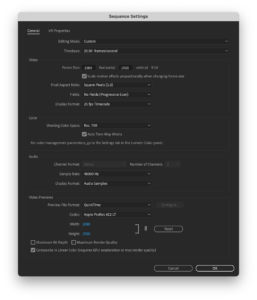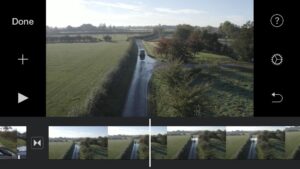The Importance of Pre-Production for a Video Project
We’re seduced by the end product, aren’t we? The movie that sweeps us off our feet, the viral ad campaign that gets people talking, or the YouTube video that racks up millions of views within hours. Yet, beneath this shiny exterior lies an invisible architecture, a series of careful decisions and meticulous plans. This is the story of video pre-production planning, the unsung hero of every successful video project, the ‘invisible architecture’ of a successful video project.
The Fallacy of Spontaneity
Spontaneity is alluring. The myth that fantastic videos are conjured in the spur of a moment feeds into the illusion of effortless creativity. However, akin to an iceberg, what you see on the surface is usually merely a fraction of the whole entity. Most of the iceberg is underwater, out of sight, and it’s the submerged part that determines how the visible part behaves. Similarly, pre-production planning is the invisible yet vital first step of a video project.
The ‘Domino Strategy’
Imagine setting up a chain of dominoes. One wrongly placed domino can interrupt the entire sequence. The goal is not just to make each domino fall, but to do so in a manner that creates a compelling spectacle. The same logic applies to video projects.
Every element, from the script and storyboard to the budget and timeline, must be aligned perfectly for the dominos to fall in a captivating display. In this sense, pre-production planning serves as your blueprint, allowing you to visualise how each element connects with the others. Ignore this stage, and you risk creating a disjointed, ineffective video that fails to engage your audience or deliver your message.
Improper Planning
Ignoring pre-production planning isn’t merely a missed opportunity, it can lead to costly mistakes down the line. Literally. Improperly planned projects can spiral out of control, consuming more time and resources than initially anticipated. Deadlines can get missed. Budgets over-run. The quality of the content & the end product suffers. Remember, fixing issues in the post-production phase can be exponentially more expensive than getting it right from the start.
Video Pre-Production Workflow
So, what can a typical video pre-production workflow look like? Below are a few of the potential steps, but it can vary widely depending on your client brief! Some projects will need all the below and a lot more, some less. Part of the beauty of shooting video content is the variability of the job – no two shoots are ever completely the same!
1. Concept / Idea Development
Before you can begin, you need a thorough grasp on what you’ll be filming. This can involve:
- Idea Generation: Brainstorming sessions or mind-mapping ideas to fit in with the client brief & what they’re looking to achieve
- Target Audience: Define your audience personas to tailer the content accordingly.
- Core Message: Identifying the primary message for the viewer & how you’ll communicate it.
- Mood Boards: Pull together a series of reference images to show the client your ideas for how the project should look.
- Cost Estimates: List out all the potential costs, from equipment to talent fees.
2. Scriptwriting
The script will serve as your project’s backbone. Look at the concept & what you’re looking to communicate, break down the key elements and start developing the script. There is no shortcut or ‘one button’ AI solution for creating a quality script – experience of how to get the tone right, pacing etc will come with experience.
When you start writing a script don’t worry about any budgetary or timeframe constraints the project might have. Get all your ideas down on paper and then take a step back, look at your work as a whole and refine from there. Re-working a grand idea is far easier than trying to create a fully refined one from scratch.
3. Storyboarding
The storyboard visualises the script, offering a panel-by-panel breakdown of each scene. You can use existing reference images from earlier in the pre-production process, AI generation or get an illustrator to draw them up.
4. Planning and Scheduling
Break down the script and storyboards into scenes / sections. Start making outlines of the locations, kit, crew, talent etc that you’ll need for each. From the lists you make you’ll be able to start working out the number of shooting days and get an idea of the overall logistical picture of your shoot.
Contingencies: Always allow for potential additional occurrences / expenses. This can include things as simple as planning around the weather for a location shoot, to last minute changes to talent availability. You plan like this in the hope that stuff doesn’t go wrong, but in the knowledge that if it does it shouldn’t have too much of a knock on effect!
5. Location Scouting and Permissions
Choosing locations that enhance your narrative is the starting point. There are lots of considerations you might need to think about, depending on what you’re planning on filming.
For instance, if you want to capture drone footage then you need to make sure the location isn’t inside an Flight Restriction Zone, or that there aren’t any NOTAMS that will affect the flight (for example).
6. Equipment & Logistics.
Working with department heads (e.g the Director of Photography), you can start to list out the equipment you’ll need & the logistics around getting it to/ from your location.
Taking into account variables you’re going to encounter at your locations – for example: physical access restrictions for vehicles / crew, load limits on floors, electrical circuit loads etc – will form the basis of your planning.
An example of this would be when we were asked by an agency to service a job filming on a beach for a fashion brand. After noting the tide times we sourced a suitable building near to the beach entrance to act as a location hub for crew and talent. Then we started plotting out where on the beach people needed to be at which point, and the filming day was built from there.
7. Risk Assessments.
Even typing the words here fills my soul with dread, but risk assessments (a.k.a an RA) are fundamental to a properly run shoot.
About as far from a box-ticking exercise as you can get, a well thought out RA can prevent so many things from going wrong. Also, your insurance company and the Health and Safety executive will have some pretty stern words (or worse), if something was to go badly wrong during a shoot.
Risk assessments force a producer to think about a shoot from an external point of view. As well as mitigating risks, this can often throw up different ways of working on set which can save time, money etc.
8. Paperwork, paperwork, paperwork.
None of your hard work and pre-production planning will come to anything if you don’t properly communicate the information to the people on the shoot!
Call Sheets, Movement Orders, Script Breakdowns etc are all part of the production pack you need to build for a successful shoot. Failure to communicate effectively with the crew, talent or client will reduce efficiency when it comes to filming.
The Takeaway
If you’re in the business of video creation, stop thinking of thorough pre-production planning as a ‘nice-to-have’ and start treating it as a ‘must-have.’ It’s not the enemy of creativity but its greatest ally, the framework within which your most innovative ideas can take flight.
So, next time you marvel at a remarkable video, remember that what you’re really seeing is the visible tip of a much larger, submerged iceberg—an iceberg carefully constructed through meticulous pre-production planning.
Some More of our Blog Posts:
- Why Vertical Video Is Important
 Our phones have become extensions of ourselves & with that vertical video has skyrocketed in popularity. Just take a look…
Our phones have become extensions of ourselves & with that vertical video has skyrocketed in popularity. Just take a look… - ‘DIY’ Brand Videos
 Creating DIY Brand Video content is – on the face of it – easy. After all, you know everything about your…
Creating DIY Brand Video content is – on the face of it – easy. After all, you know everything about your… - Investing in a Video Marketing Strategy for 2024 – A Comprehensive Guide for Marketers
 Introduction Video marketing is hardly a new phenomenon, but the extent to which it continues to permeate and resonate in…
Introduction Video marketing is hardly a new phenomenon, but the extent to which it continues to permeate and resonate in…
